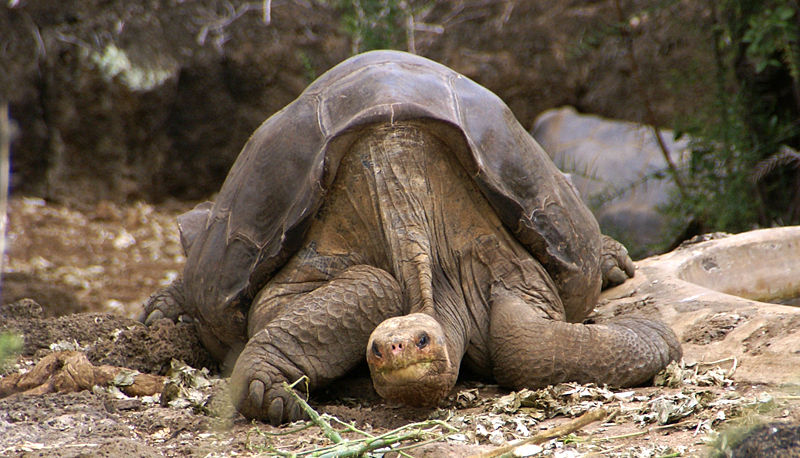As the Science World Turns: June Edition

Here is the first edition of As the Science World Turns. This new monthly feature is going to focus on science news stories outside of the US, in another effort to combat our American centric tendencies at Skepchick. Over the last month, I have been compiling science news stories from abroad. Here are a few that caught my attention this month including Russia’s plan to invigorate their scientific industry, Canada hating the environment, the first Chinese female in space, the extinction of a species, and the effect of fast food on the Indian population.
Go West, young Russians — BUT don’t forget the Motherland
Nature recently published a news article named “Go West, young Russian.” Vladimir Putin has proposed an initiative to fund young, Russian students at elite universities around the world. The gig includes tuition, living expenses, and travel. The three year, five billion rouble (~US $165 million) effort is to revitalize the floundering science industry in Russia, while encouraging international research collaborations. Of course there is a catch, the students must return home to enter the Russian work force for at least three years. If not, they are expected to payback the funding. Overall I believe the initiative is a good thing. Funding 2,000 students per year in STEM fields, social sciences, and business should catalyze the desired effect. [Source: Nature May 2012]

Canadian government — Hating the environment since 2012
This week Canada’s conservative government is expected to pass a bill that was supposed to give scientists a sigh of relief. Instead, it is only giving some scientists the anticipated mollification. The intention was to shift money from pure science to applied research. As with many government budgets, the devil is in the details. The appropriation is shifting money from environmental and climate research to oil and natural resource development. One of the high profile facilities expected to be closed is the Experimental Lakes Area facility in Ontario. This location established in 1968 has been involved in a plethora of international collaborations, and shaped the regulations for mercury pollution. Canadians aren’t taking these cuts lying down. They have launched protests and letter writing campaigns to catch the Canadian Prime Minister, Stephen Harper’s attention. Despite concerns, it seems unlikely that the bill will be reformulated. [Source: Science Mag June 2012]
The first female Chinese astronaut — Liu Yang

The piece I found this week in Science wasn’t about the first female Chinese astronaut much to my dismay. However, I was excited to read that it was happening so I am going to highlight it. Liu Yang participated in the Shenzhou 9 mission this week. The manned Chinese space program is in its relative infancy, established in 1999. However, in a country with such a significant gender gap, I am somewhat surprised to learn about its first female astronaut. To put it in perspective — It took Russia only two years to launch a woman after the first man, but it took the US a whopping 22 years to accomplish the same feat.
Now to the real topic of the Science article — With the US recently eliminating the shuttle program there is room in the space race for a new player. China is hoping to fill that position, but still seems quite far behind. The goal of the Shenzhou 9 mission was to dock into the Tiangong module. On June 28th, the astronauts landed and the mission was accomplished. Docking serves as the first real step to establishing competitive space program, as it is required to accomplish most tasks in space. China’s space research goals include the black hole probe program and a dark matter detection initiative. [Source: Science Mag June 2012]
Lonesome George passes
 Lonesome George, the last known Galapagos tortoise has passed. Discovered in 1971 by Joseph Vagvolgyi, he was thought to be approximately 100 years old. Mating attempts over the years failed and another species dies. A moment of silence for Lonesome George and the Galapagos tortoises of yore. [Source: Science Mag June 2012]
Lonesome George, the last known Galapagos tortoise has passed. Discovered in 1971 by Joseph Vagvolgyi, he was thought to be approximately 100 years old. Mating attempts over the years failed and another species dies. A moment of silence for Lonesome George and the Galapagos tortoises of yore. [Source: Science Mag June 2012]
Samosas and Burgers — Too much nom, nom nom.
Type II Diabetes is on the rise in India at alarming rates. The combination of fried food stands selling samosas and western burger joints popping up is the likely culprit. In 2000, just over 30 million people were diagnosed with Type II Diabetes. That number has doubled over the past 11 years, not to mention it went from 50 to 60 million between 2010 to 2011 alone. This disease is traditionally diagnosed in a person’s 40’s or 50’s, alarmingly, it is being diagnosed in the 20-somethings age group. Another change is that this problem was predominantly limited to cities, but has been extending to rural areas of late. The Indian government is becoming aware of this problem, but solutions have been slow going. Government regulation isn’t the only barrier, the general nonchalant attitude of Indians is proving equally as challenging to overcome. [Source: Nature May 2012]





Not to be overly picky, but Lonesome George wasn’t the last Galapagos tortoise, he was the last of a Galapagos tortoise subspecies, the Pinta Island tortoise. Other subspecies of the Galapagos tortoise are alive and well.
I’ve always felt a bond with George, being a terminal bachelor myself. The announcement really hit me pretty hard.
However, there is another tortoise in a zoo in Germany that is believed to be a Pinta tortoise. Another male, of course. But his origin is unknown and they aren’t really sure. I’m sorry I don’t remember which zoo.
Thanks for the correction!
Eh, I hesitate to call it a correction, as I didn’t really say anything substantive.
And as it turns out I was wrong. The tortoise is in the Prague Zoo, and further DNA testing has shown it’s more likely a Pinzon Island tortoise.
However, it also turns out there are hints that there may be a Pinta Island tortoise alive on Isabela Island, which had been used as a dumping ground for tortoises in the past.
http://en.wikipedia.org/wiki/Chelonoidis_nigra_abingdonii
You should check the alleged way in which the women were chosen for the space programme in China. Some say they were supposed to be married, since this proves they are more mentally stable…
Very interesting. I will take a look into that.
Well, studies show that there is a correlation between being married and being more psychologically stable and resilient. Not the one to push gendernormative (right word?) behaviour, but in a high risk occupation like astronaut it might be comparable to prefer someone who lives healthy and exercises a lot over someone who doesn’t.
Maybe we could send Mayor Michael Bloomberg of New York City over to India for a spell, heh.